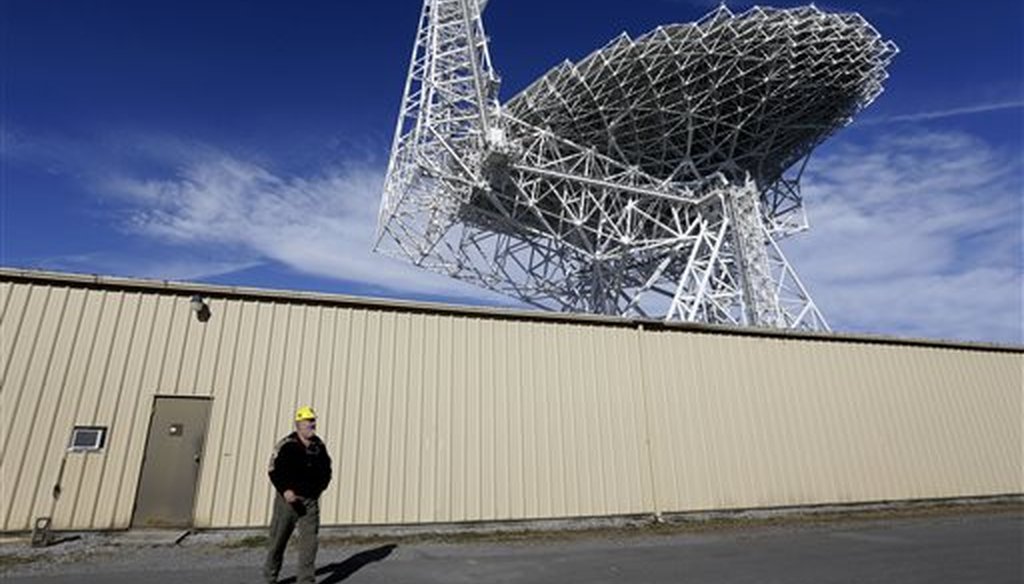

Our only agenda is to publish the truth so you can be an informed participant in democracy.
We need your help.


The Robert C. Byrd Green Bank Telescope in Green Bank, W.Va., the largest fully-steerable radio telescope in the world. (AP)
Is West Virginia trailing its neighbors in science, technology, engineering and math in higher education? West Virginia University President E. Gordon Gee said so during his State of the University address on March 19.
"Our state has fewer science, technology, engineering and math graduates than any neighboring state," Gee said.
We decided to see if Gee was correct. We defined a "neighboring state" as one that shares a border with West Virginia: Maryland, Kentucky, Ohio, Pennsylvania, and Virginia.
To support his assertion, Gee’s office referred us to a website run by a corporate-location consulting firm called the Site Selection Group. The site provides statistics for STEM degrees conferred in 2016.
Using raw numbers of graduates, Gee is correct: West Virginia conferred 4,912 STEM degrees, which is smaller than the neighboring five states. The second-smallest was Kentucky, with 8,252 degrees.
However, looking just at raw numbers of graduates is misleading because West Virginia has a smaller population than any of the other states. To cancel out the effect of population, we also looked at the percentage of all degrees conferred in the state that were for STEM fields.
On this measure, West Virginia ranks last among nearby states, too, though the comparison is closer. (We used data from the federal Department of Education that combines associate, bachelor’s, master’s and doctorates conferred in each state for 2015-2016.)
We found that 16 percent of West Virginia’s degrees came in STEM fields, close to -- but behind -- Virginia at 17 percent and Kentucky, Ohio, and Pennsylvania at 18 percent. Maryland was the clear leader with 23 percent.
Gee said, "Our state has fewer science, technology, engineering, and math graduates than any neighboring state." He’s right both on the raw numbers and as a percentage of all degrees granted, though measuring by percentage, it’s a pretty close competition.
We rate the statement True.
E. Gordon Gee, State of the University video, Mar. 19, 2019
Site Selection Group, STEM Majors Are Accelerating in Every State, Just as Humanities Degrees Are Declining, Sept. 1, 2017
U.S. Department of Education, Table 319.20: Degrees conferred by postsecondary institutions, by level of degree and state or jurisdiction: 2013-14 through 2015-16, accessed April 23, 2019
National Science Foundation, How do states compare in the percentage of degrees that are S&E degrees?, accessed April 5, 2019
Email interviews with E. Gordon Gee, April 10-18, 2019
In a world of wild talk and fake news, help us stand up for the facts.
